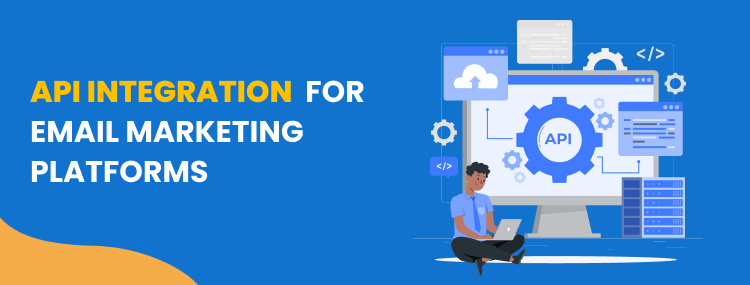In today’s digital landscape, email marketing remains a crucial tool for businesses to engage with their customers and drive conversions. However, managing multiple email marketing platforms simultaneously can be time-consuming and inefficient. That’s where API integration comes into play. By seamlessly connecting different platforms, API integration streamlines processes, enhances efficiency, and optimizes campaign performance. In this article, we’ll explore the benefits of API integration for email marketing platforms and how it can transform your marketing efforts.
1. What is API Integration for Email Marketing Platforms?
API integration involves connecting different software systems or applications to enable seamless data exchange and communication. When it comes to email marketing platforms, API integration allows for the automatic transfer of data between platforms, eliminating the need for manual data entry and synchronization. By integrating APIs, marketers can streamline their workflows and ensure consistent data across multiple platforms.
2. Enhancing Efficiency with API Integration
One of the key advantages of API integration for email marketing platforms is the ability to automate tasks. With API integration, marketers can sync subscriber lists, automate email campaign creation and deployment, and track campaign performance in real-time. This automation saves valuable time and resources, allowing marketers to focus on crafting compelling content and strategy rather than manual data management.
3. Streamlining Processes and Data Synchronization
API integration enables seamless data synchronization across various email marketing platforms. This means that when a subscriber’s information is updated on one platform, it automatically reflects across all integrated platforms. Whether it’s updating contact details, managing subscription preferences, or tracking engagement metrics, API integration ensures consistency and accuracy of data, eliminating the risk of outdated or conflicting information.
4. Personalization and Targeted Campaigns
API integration opens up possibilities for highly personalized and targeted email marketing campaigns. By integrating customer data from other platforms such as CRM systems or e-commerce platforms, marketers can leverage valuable insights to segment their audience and deliver tailored content based on customer preferences, behaviors, or purchase history. This level of personalization drives higher engagement and conversions, ultimately boosting the effectiveness of email marketing campaigns.
5. Advanced Analytics and Reporting
API integration allows for real-time access to data and advanced analytics across multiple platforms. Marketers can gain valuable insights into email open rates, click-through rates, conversion rates, and other key performance indicators. By analyzing this data, marketers can refine their strategies, make data-driven decisions, and optimize campaign performance. API integration empowers marketers with comprehensive reporting and analytics capabilities, facilitating continuous improvement and growth.
In conclusion, API integration for email marketing platforms offers significant advantages for businesses aiming to streamline processes, enhance efficiency, and optimize campaign performance. By seamlessly connecting different platforms, API integration eliminates manual data entry, ensures data consistency, and enables automation. This, in turn, allows marketers to focus on creating compelling content, personalizing campaigns, and analyzing valuable data to drive better results. Embracing API integration is a step towards harnessing the power of technology to enhance your email marketing efforts and stay ahead in the competitive digital landscape.

